 I am sure you’ve searched Google recently. Probably even today. And if you have, you may have seen a helpful box featuring a quick answer to the query, with a link to the source.
I am sure you’ve searched Google recently. Probably even today. And if you have, you may have seen a helpful box featuring a quick answer to the query, with a link to the source.
That’s Google’s featured snippet (previously known as an answer box).
There’s no way you may have missed those because they are so common these days: You get to see them for every other query.
Table of Contents
Google’s Featured Snippets: What Are They?
Google is doing their best to keep their users happy: Featured snippets give quick answers to many queries. That’s Google’s attempt to:
- Meet users’ needs
- Optimize their platform for mobile and voice search users
- Keep people using their site
Whether you like #3 above or not is out of question. It’s either your site appearing in that featured box or it’s your competitor’s page. Your choice.
If you are looking for more SERPs visibility, you need to optimize for featured snippets. There’s no other way because sometimes, even if you managed to get that #1 position, you may find your page buried down search results page:
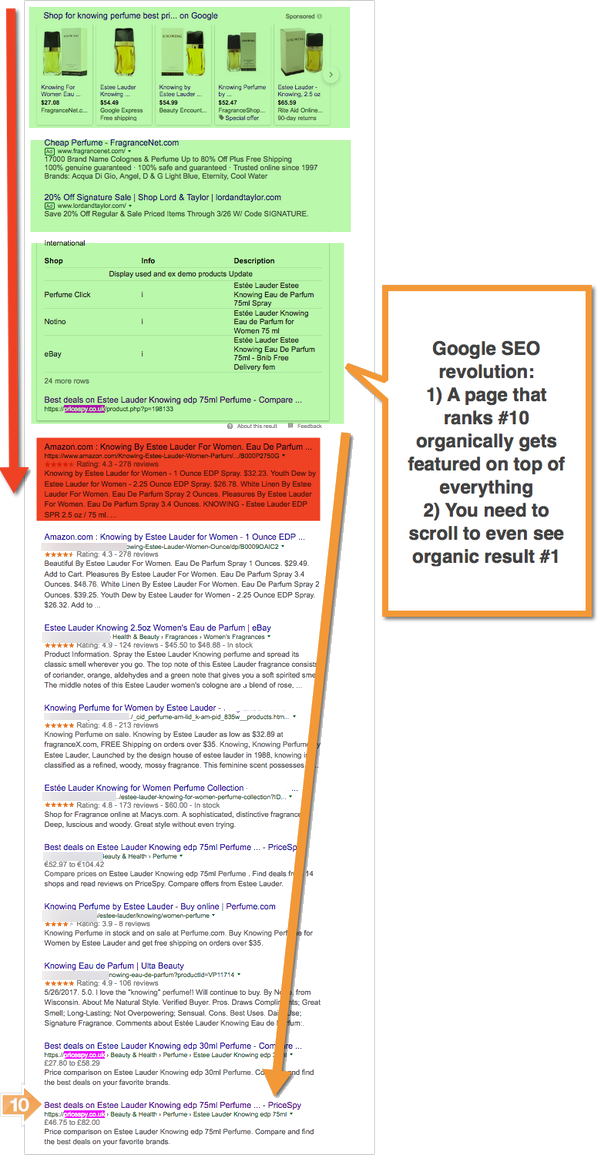
How to Optimize for Google’s Featured Snippets
Unfortunately, while being valid, Google’s own recommendation on how to get featured is not very actionable: You need to give the best answer to the query you want to be featured for.
Luckily, there’s a tool to help: The newly launched Featured Snippet Optimization tool is there to help, giving you all the data and step-by-step instructions on how to proceed.
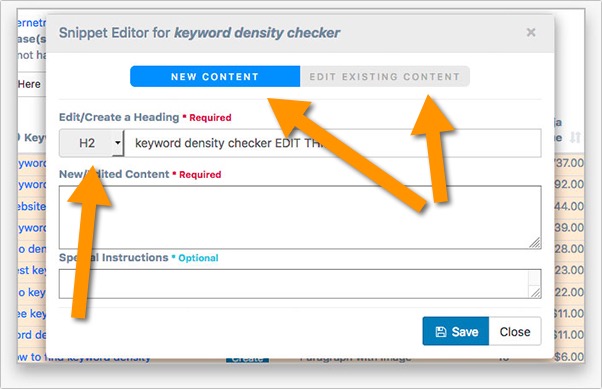
[Disclaimer: The tool has been developed by the company I work for]
Featured Snippet Optimization Tool: The Walk-Through
The Featured Snippet Optimization tool works on credits: It collects data from a variety of paid APIs, so every run costs money (which is why it has no free trial).
Once you purchase your credits, follow the easy set-up process:
1. Add your domain
Click: “Create a new run”, copy-paste your domain (to make sure it’s spelled right) and click “Run at Domain Level”.
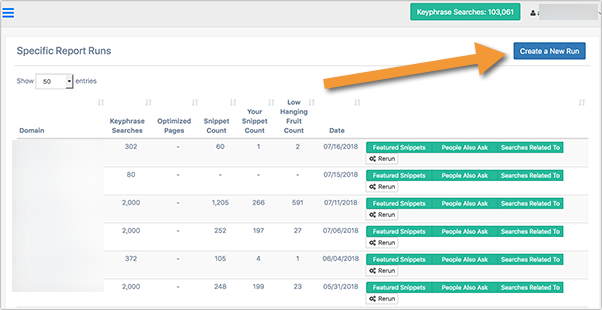
This is the easiest step to start with. There are more ways to run the tool but I will not overwhelm you with them. Even after using the tool for a few months now, I still use the domain option most.
The tool will go through a number of APIs to collect and present the data. Naturally, the higher you rank for a variety of queries, the more data will be collected and the more cool opportunities you’ll get. If your site is new, I’d recommend creating a separate run for each of your major competitors: This will allow you to create a solid content creation and optimization strategy to build up to.
Once you are presented with data, run your phrases. Be advised, that each run costs you one credit:
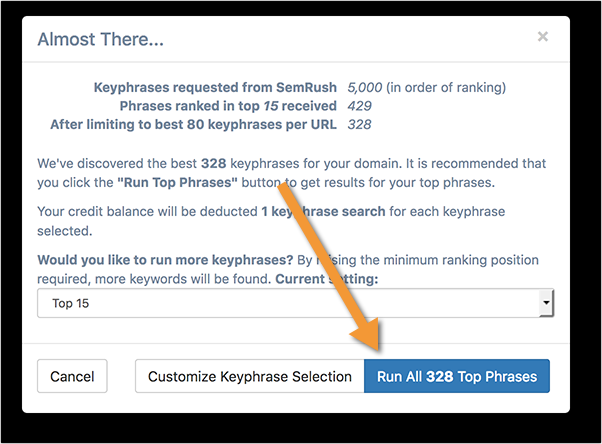
2. Start with your low-hanging-fruit opportunities
Once the tool is done researching your opportunities, you will see a handy report breaking your site featured snippet opportunities by URL. You’ll see:
- how much potential each URL has (based on Ninjas Value)
- how many featured opportunities each page holds (as well as if your page is currently featured for any)
- how many other domains you are competing with
- how many long-hanging-fruit opportunities there are for your brand
Pay attention to that low-hanging-fruit flag. Generally, the higher you rank, the better your odds are to get featured.
Any time you rank higher than your featured competitor, there’s a low-hanging-fruit opportunity for you.
This means, with a fairly easy on-page optimization effort, you are likely to snatch that featured snippet opportunity from your competitor.

Grab those first.
3. Create featured-snippet-optimized content
Now start optimizing your copy. You can add to your copy or edit your existing content. Click “Create” next to you low-hanging-fruit opportunity and start writing content. The tool will prompt you to add an H2/H3 subhead with your target keyword because Google pays a lot of attention to those when looking for an answer on the page.
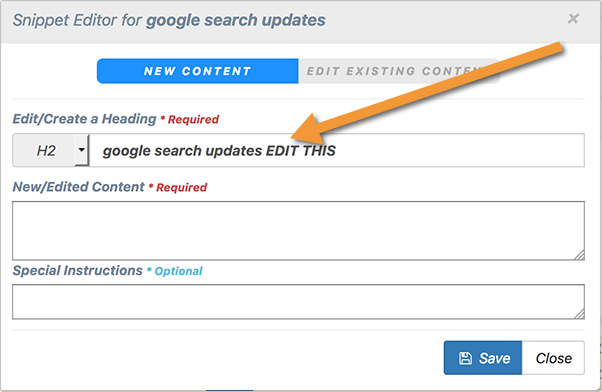
You can also open the preview of your page right within the tool to copy your existing content and see which sections and parts of it can be optimized.
Mind that you can (and should!) optimize for many related queries, so try to create your copy to catch as many featured snippet opportunities as you can.
4. Pay attention to and optimize for “People Also Ask” results
While working on your content, keep an eye on those “People Also Ask” results the tool has collected for you.
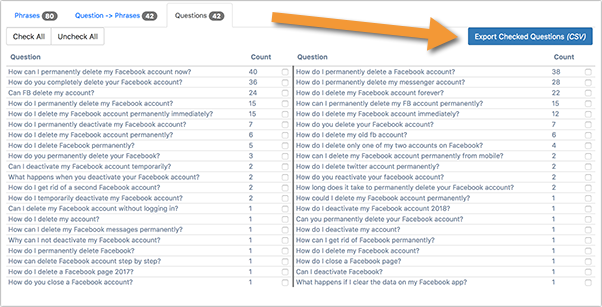
These are related questions that are tightly connected to featured snippet algorithm. In fact, there’s a featured snippet for all of those questions you see there.
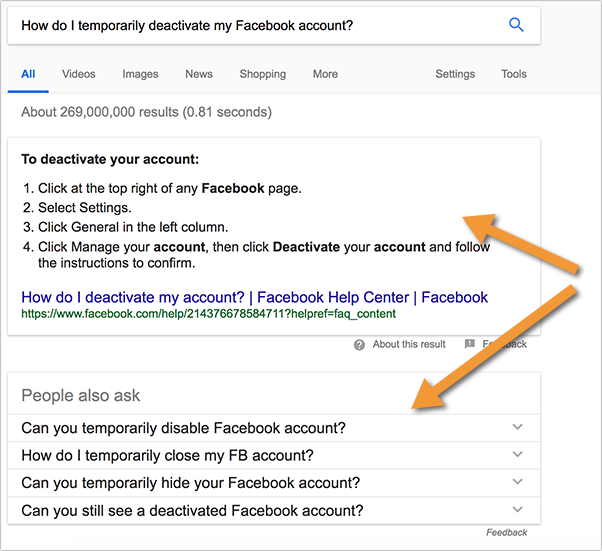
Try and cover as many of those questions as you can: Not only will they make your page more valuable and helpful for your user but they will also allow you to get ranked and featured for a more variety of important queries.
Trust me: That list of popular questions alone is worth the money you paid for credits to run the tool!
5. Publish your optimized copy, wait, re-run
Once you are done creating your featured snippet optimized copy, export your HTML with all the changes (content to add as well as content to edit).
Publish your optimized content, give it a few weeks and rerun the tool. You’ll find your site featured for more queries and you are likely to see your rankings go up as well (that’s what an optimized copy does for your site!), so you may find a lot more opportunities.
Rank higher and get featured more with every run.
More Tasks and Teams The Featured Snippet Optimization Tool Can Help You With
Beyond being featured (which is already huge), the tool will help you with more digital marketing tasks:
Your content team…
Your content team will find lots of new content ideas. They will also find it much easier to optimize content (the tool lets you fill in important fields, like an H2/H3 subhead so you don’t forget)
Overall, if you do featured optimization right, you’ll see your content much more indepth and valuable which will surely reflect on your rankings and conversions in a most positive way.
Competitive analysis…
Find out exactly where your competitor rank and how they build their copy to get featured. You may find how they use lists and tables to grab more opportunities as well as which other terms they are optimizing for that you are missing.
Voice search optimization
Google uses featured snippets to power their voice search: Any time there’s a featured result, that’s what is being read to the voice search user. They will hear from your brand a lot if you do your job right.
For more ideas and information, refer to our Featured Snippet Knowledge base. There are a few detailed featured snippet optimization guides referenced from there including my Pubcon deck and Moz article.
